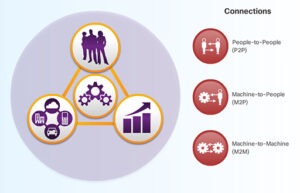Streamlining Rideshare Operations Enhancing Efficiency in the Digital Age
In the dynamic landscape of urban transportation, ridesharing has emerged as a transformative force, revolutionizing how people move around cities. With the proliferation of rideshare services like Uber, Lyft, and others, the need to streamline operations has become paramount. This article explores the various strategies and technologies that reshape the ridesharing industry, drive efficiency, and improve user experience.
Introduction to Ridesharing
Ridesharing has democratized transportation, offering convenient, affordable, and flexible mobility solutions to millions of commuters worldwide. By leveraging digital platforms and mobile applications, rideshare companies connect passengers with drivers, enabling seamless journeys across urban landscapes.
Challenges in Rideshare Operations
Despite its popularity, the ridesharing industry faces several challenges that impact operational efficiency. These include:
- Driver Utilization: Maximizing driver utilization while minimizing idle time is crucial for profitability.
- Dynamic Demand: Fluctuating demand patterns require real-time driver allocation and routing optimization.
- Safety and Security: Ensuring drivers’ and passengers’ safety and security remains a top priority.
- Regulatory Compliance: Navigating complex regulatory frameworks presents regulatory hurdles for rideshare companies.
Leveraging Data Analytics
Data analytics plays a pivotal role in streamlining rideshare operations. By harnessing vast amounts of data generated through mobile applications and GPS technology, rideshare companies can:
- Demand Forecasting: Predicting ride demand enables proactive driver allocation and efficient resource management.
- Route Optimization: Utilizing algorithms to optimize routes reduces travel time and enhances driver productivity.
- Dynamic Pricing: Implementing dynamic pricing algorithms based on demand-supply dynamics ensures fair pricing and maximizes revenue.
- Safety Enhancement: Analyzing data to identify patterns and mitigate potential safety risks enhances overall passenger and driver safety.
Implementing Artificial Intelligence
Artificial intelligence (AI) algorithms are revolutionizing rideshare operations by enabling:
- Predictive Maintenance: AI-driven predictive analytics anticipate maintenance issues, reducing vehicle downtime and maintenance costs.
- Driver Behavior Analysis: Monitoring driver behavior through AI-powered systems enhances safety and encourages responsible driving practices.
- Personalized User Experience: AI algorithms analyze user preferences and behaviors to deliver personalized recommendations and promotions, fostering customer loyalty.
- Fraud Detection: AI-based fraud detection algorithms identify and prevent fraudulent activities, safeguarding the integrity of the rideshare ecosystem.
More Read Here: How Dumpor Enables Anonymous Instagram Story Viewing
Embracing Electric and Autonomous Vehicles
The transition to electric and autonomous vehicles represents a significant paradigm shift in rideshare operations. By embracing sustainable and autonomous technologies, rideshare companies can:
- Environmental Sustainability: Electric vehicles reduce carbon emissions and contribute to environmental sustainability.
- Cost Savings: Lower operating costs associated with electric vehicles translate into increased profitability for rideshare companies.
- Autonomous Driving: Autonomous vehicles promise enhanced safety, reduced labor costs, and improved operational efficiency.
Enhancing the User Experience
User experience is a critical differentiator in the ridesharing industry. By focusing on enhancing the user experience, rideshare companies can:
- Seamless Booking Process: Streamlining the booking process and providing real-time updates enhance user satisfaction.
- Transparent Pricing: Clear and transparent pricing models build trust and credibility among users.
- Driver Ratings and Feedback: Implementing driver rating systems empowers users to provide feedback and ensures service quality.
- Accessibility Features: Introducing accessibility features caters to diverse user needs and promotes inclusivity.
Regulatory and Ethical Considerations
As the ridesharing industry continues to evolve, addressing regulatory and ethical considerations is imperative. Key areas of focus include:
- Worker Classification: Clarifying the employment status of rideshare drivers and ensuring fair labor practices.
- Data Privacy: Safeguarding user data and complying with privacy regulations to protect user privacy rights.
- Accessibility and Equity: Ensuring equitable access to rideshare services for underserved communities and individuals with disabilities.
Conclusion
Streamlining rideshare operations is essential for optimizing efficiency, enhancing user experience, and driving innovation in the urban transportation landscape. By leveraging data analytics, artificial intelligence, sustainable technologies, and prioritizing user satisfaction, rideshare companies can navigate challenges and thrive in an increasingly competitive market environment.
In conclusion, the journey towards streamlining rideshare operations is a continuous evolution, driven by innovation, collaboration, and a relentless commitment to delivering seamless mobility solutions for the masses.













Post Comment